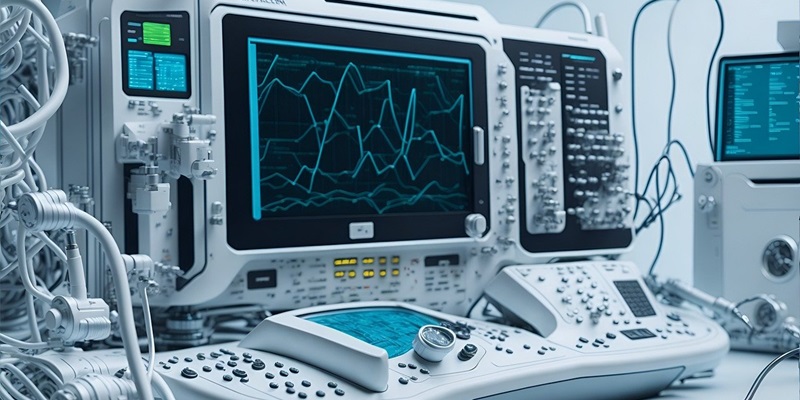The field of medicine has witnessed a rapid integration of AI-based tools in recent years. In fact, the US Food and Drug Administration (FDA) has authorized over 500 AI tools for use in medical care, showcasing the increasing reliance on these intelligent technologies. However, despite the existence of a wide range of clinical AI tools, surveys reveal that only a small percentage of physicians, ranging from 10% to 30%, have actually incorporated them into their practice. This underutilization highlights the need to enhance awareness and adoption of AI tools among healthcare professionals.
Limited utilization of clinical AI tools by physicians
Despite the awareness surrounding clinical AI tools, the actual utilization by physicians remains relatively low. Studies consistently demonstrate that a significant proportion of healthcare professionals are unaware of the full potential of these tools or struggle with implementing them into their workflow. Closing this gap between awareness and utilization must become a pivotal focus to optimize the benefits that AI can bring to medical care.
Lack of awareness regarding monitoring AI performance and safety in hospitals
While AI tools present promising opportunities, hospitals often lack awareness regarding the challenges associated with monitoring AI performance and ensuring safety. As these tools become more ingrained in medical practice, it is crucial to understand the potential risks and develop robust mechanisms to evaluate and validate their performance. Failure to do so may lead to safety concerns and hinder the wider adoption of AI in healthcare settings.
Exploration of medical AI with broader capabilities
Recognizing the limitations of current AI tools in medicine, researchers have embarked on exploring the potential of medical AI with broader capabilities. In 2021, scientists at Stanford University coined the term “foundation models” to describe models trained on diverse datasets, encompassing images, text, and other data, using a method called self-supervised learning. This novel approach aims to overcome the narrow focus of existing AI devices and enhance their capacity to deliver accurate and meaningful insights.
Distinction between Supervised Learning and Self-Supervised Learning in Medical AI
A large portion of the medical AI devices currently in use has been developed using supervised learning, where models are trained on labeled datasets. While this approach has yielded valuable results, it has limitations in scalability and generalization. In contrast, foundation models trained through self-supervised learning leverage the vast amounts of unlabeled data available in electronic health records, medical imaging, and genomics. By extracting patterns from this extensive data, foundation models have the potential to revolutionize medical diagnostics and improve patient outcomes.
Potential applications of foundation models in ophthalmology
Among various medical specialties, ophthalmology stands to benefit tremendously from foundation models. The high-resolution imaging capabilities of these models make them particularly suitable for diagnosing and monitoring conditions affecting different parts of the eye. By analyzing comprehensive datasets inclusive of images, patient records, and genetic information, foundation models can provide accurate and timely assessments, enabling better patient care and early detection of diseases that may lead to vision loss.
Investment by Big Tech companies in medical imaging foundation models
Big tech companies have already recognized the immense potential of medical imaging foundation models. These models utilize multiple image types, such as skin photographs, retinal scans, X-rays, and pathology slides, while also incorporating electronic health records and genomics data. By harnessing the power of this diverse information, there is growing optimism that foundation models will uncover patterns and insights that may elude human comprehension. This represents a significant leap forward in medical diagnostics and has the potential to enhance patient outcomes and revolutionize healthcare delivery.
Future prospects of AI in radiology
The field of radiology stands at the forefront of the AI revolution, with AI tools already making significant inroads. Experts foresee continued growth and integration of AI in radiology. However, despite the advancements, there is a consensus that AI will not replace radiologists but rather augment their capabilities. AI has the potential to streamline workflows, improve efficiency, and assist radiologists in making more accurate diagnoses. To maximize its potential, radiologists should receive specialized training to effectively utilize AI and incorporate it seamlessly into their practices.
The utilization of AI in medicine has grown exponentially, with over 500 FDA-authorized AI tools available for use. To harness the full potential of these intelligent technologies, it is imperative to bridge the gap between awareness and utilization among healthcare professionals. Additionally, monitoring AI performance and ensuring safety remain crucial considerations. The emergence of foundation models, trained through self-supervised learning, offers exciting possibilities in revolutionizing medical diagnostics and patient care. As AI continues to play an increasingly significant role in medicine, continuous research, collaboration, and training will be essential in maximizing its benefits and transforming the landscape of healthcare.

